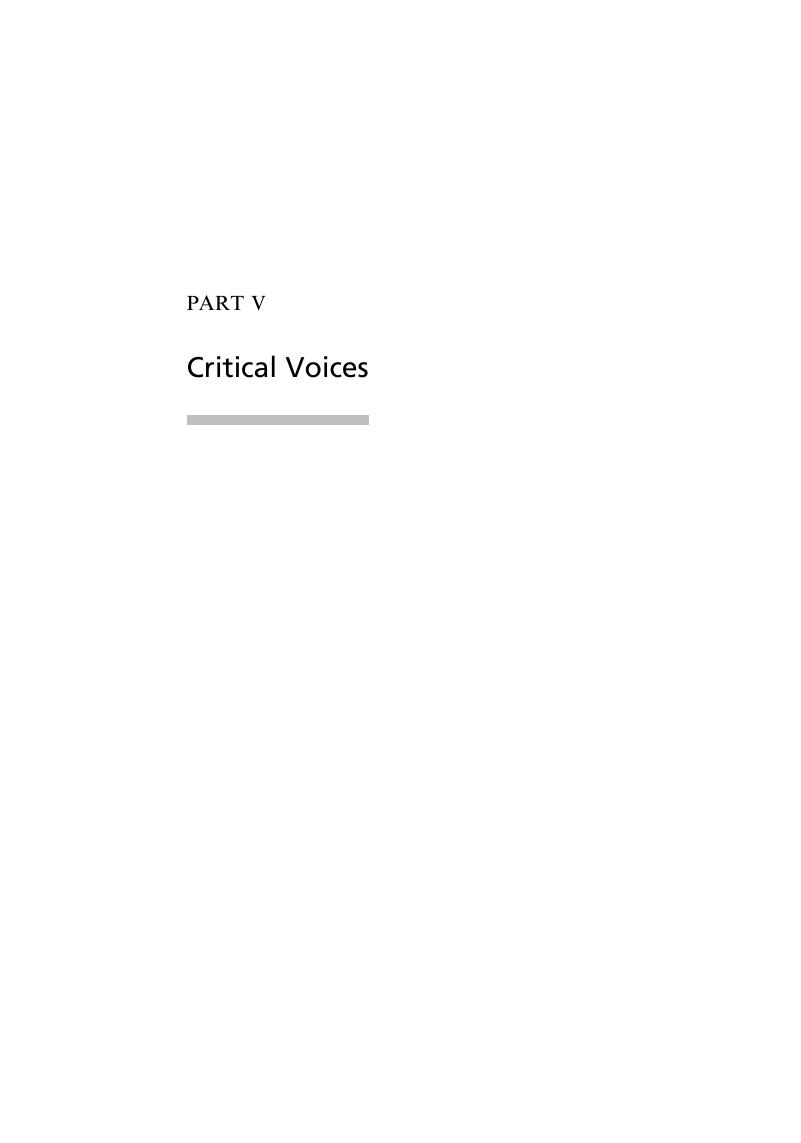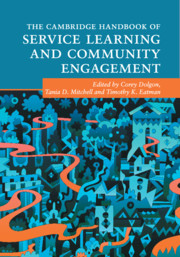Book contents
- The Cambridge Handbook of Service Learning and Community Engagement
- The Cambridge Handbook of Service Learning and Community Engagement
- Copyright page
- Contents
- Figures
- Tables
- Contributors
- Preface
- Introduction
- Part I Histories of Education and Engagement
- Part II Best Practices and Pedagogies
- Part III Engaged Teaching and Scholarship across Disciplines
- Part IV Research, Teaching, Professions, and Policy
- Part V Critical Voices
- Conclusion
- Index
- References
Part V - Critical Voices
Published online by Cambridge University Press: 23 February 2017
- The Cambridge Handbook of Service Learning and Community Engagement
- The Cambridge Handbook of Service Learning and Community Engagement
- Copyright page
- Contents
- Figures
- Tables
- Contributors
- Preface
- Introduction
- Part I Histories of Education and Engagement
- Part II Best Practices and Pedagogies
- Part III Engaged Teaching and Scholarship across Disciplines
- Part IV Research, Teaching, Professions, and Policy
- Part V Critical Voices
- Conclusion
- Index
- References
Summary

- Type
- Chapter
- Information
- Publisher: Cambridge University PressPrint publication year: 2017



